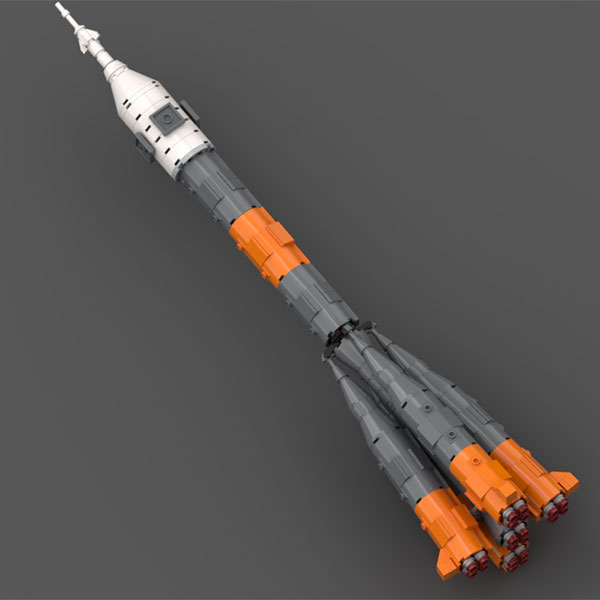
LEGO Designer:
Nico Daams (Tech_niek)
Designed:
May 2018
Categories:
Launch Vehicles, All, Manned Spaceflight, Medium Lift Launch Vehicle, Space Agency - Roscosmos
Launch Vehicle Details
Stages:
Length:
Diameter:
Mass at Launch:
Low Earth Orbit Capacity:
Total Thrust:
Apogee:
Class:
The Soyuz-FG launch vehicle was an improved version of the Soyuz-U from the R-7 family of rockets, designed and constructed by TsSKB-Progress in Samara, Russia. Guidance, navigation, and control system was developed and manufactured by “Polisvit” Special Design Bureau (Kharkov, Ukraine).
Soyuz-FG made its maiden flight on 20 May 2001, carrying a Progress cargo spacecraft to the International Space Station (ISS). It was retired after the 25 September 2019 launch of Soyuz MS-15 to the ISS; the analog control system significantly limited its capabilities and prompted its replacement by Soyuz-2. From 30 October 2002 to 25 September 2019, the Soyuz-FG was the only vehicle used by the Russian Federal Space Agency to launch Soyuz-TMA and Soyuz-MS crewed spacecraft to the ISS.
For uncrewed flights, Soyuz-FG optionally flew with a Fregat upper stage, developed and produced by Lavochkin Association in Khimki. The maiden flight of this configuration occurred on 2 June 2003, the first of ten such launches. Launches of the Soyuz-FG/Fregat configuration were marketed by a European-Russian company called Starsem.
Soyuz-FG was launched from the Baikonur Cosmodrome in Kazakhstan, from Gagarin’s Start (pad LC-1/5) for crewed missions, and from LC-31/6 for satellite launches with the Fregat variant.
The Soyuz-FG performed 64 successful launches until its first failure on 11 October 2018 with the Soyuz MS-10 mission. A video recording of the spaceflight released several weeks later suggested a faulty sensor, resulted in the destruction of the rocket. The crew, NASA astronaut Nick Hague and Russian cosmonaut Aleksey Ovchinin, escaped safely.
Downloads
Part count: 306 bricks, 44 lots.
| Unit | width | length | height |
|---|---|---|---|
| Studs | 13.0 | 13.0 | 57.3 |
| Inches | 4.1 | 4.1 | 18.0 |
| Centimetres | 10.4 | 10.4 | 45.8 |
No external URL provided.
Launch History information from space.skyrocket.de
Launch History information from space.skyrocket.de
Related Posts
None found

